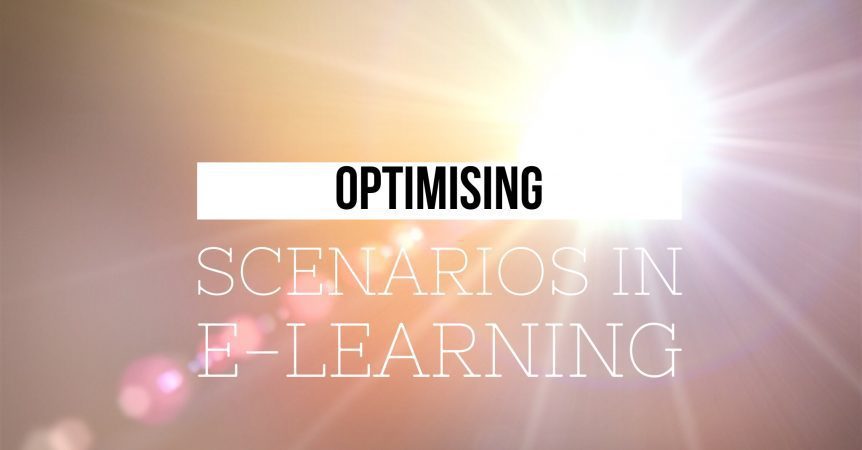Optimising Scenarios in E-Learning
Scenarios can help turn a good e-learning course into a fantastic one. They help make the content of the course more relevant to the learner and they encourage engagement. They also show the learner the consequences of taking a particular course of action.
As with most things in life, however, there are good scenarios in e-learning and there are bad scenarios. Below you will find key tips to help you optimise the scenarios in your courses. First, though, a quick recap on what scenarios are and why you should include them.
Scenarios Explained
Role-playing is a feature of many classroom-based courses, particularly in corporate and business training. Scenarios are the e-learning equivalent of role-playing.
In other words, you present a situation to the learner who must then use the skills and knowledge they have learned in the course to make decisions and/or take actions.
This improves the learning experience, makes the content of the course relatable to the learner’s everyday working environment, and helps you maximise the results of your training initiatives.
Optimising Scenarios
There are three structural elements you need to consider when creating a scenario for your e-learning courses. These are:
- Story
- Urgency
- Choices
Let’s look at each in more detail.
Make the Story Compelling
The first and most important step is to make the story compelling to the reader. This starts with creating the scenario on a topic the learner will relate to, i.e. the subject of the scenario should not be abstract or unfamiliar.
A key part of making the scenario relevant is creating a familiar protagonist. Ideally, this should be the learner himself/herself.
You also need to create obstacles and problems the protagonist must deal with or overcome as part of the scenario. This could be an individual – an antagonist – or a situation. Examples include something that is difficult to do, something that presents unique challenges, or something that presents opportunities.
The way you tell the story is crucially important as well. Here are some tips:
- Make it relatable – the above deals with making the topic of the scenario relatable, but you must make the text relatable too. That means talking the learner’s language, for example, as well as writing in a tone of voice that appeals to the learner.
- Be creative – the scenario should be believable and interesting. This requires you to be creative with your storytelling.
- Don’t go over-the-top – while it is important to be creative, it is equally important not to go over-the-top. Generally, this means leaving out anything that has no direct impact on the scenario and/or has little-to-no instructional purpose.
- Show, don’t tell – you can do this with the words you use but another important element is to use images and videos where appropriate.
Urgency Is Your Friend
Another thing you should consider when creating scenarios in e-learning is to create a sense of urgency, usually using a time limit. This isn’t essential as there are many great examples of scenarios that don’t include a time limit. A sense of urgency can, however, enhance engagement and improve retention rates. The latter particularly applies if the urgency in the e-learning course closely matches the urgency the learner experiences in real-life situations.
Just make sure you create a realistic time limit. Asking the learner to attempt to do something in 10 minutes which would normally take them 20 will not be effective.
Make the Choices Interesting
The final element you should consider when creating scenarios in your e-learning course is the choices you present to the learner. Choices are where you get the learner to make a decision or take an action.
A simple way of doing this is to create a situation where there is a right and a wrong answer. While this is easy to do, it doesn’t represent properly what happens in real-life as many decisions and actions are not black or white. Instead, there can often be multiple correct and multiple incorrect answers.
So, instead of having a right and a wrong answer, try one or more of the following:
- One good and one brilliant answer
- Two options, both of which are bad – after all, we don’t always get to take decisions where at least one of the options is a good one
- Options that contain both good and bad parts
Doing the above will make the scenario more realistic, interesting, and challenging.
Adding Scenarios to Your Course
Scenarios do much more than simply break up the content while also engaging the learner. In addition to these things, they can also play a major role in helping the learner remember and understand the new knowledge and/or skills the course gives them.
Often you will need a professional e-learning course creator to develop effective scenario elements (contact us if you are in the MENA region).
By doing so, however, the results you get from training your team and others will improve.

